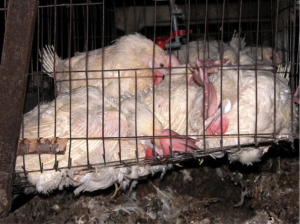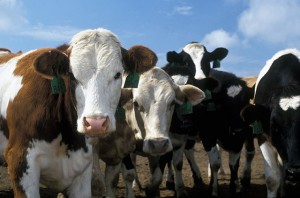Kyle Gillen, Building and Construction Technology
Aliza Ahlen, Animal Science
Thomas Novotny, Wildlife Ecology and Conservation
It is hard to believe, but there was a time when a cut could kill you. We are seeing this happen again; where 2 million Americans a year are infected with bacteria that can not be killed with any known antibiotics (Young 2013). Of the 2 million Americans, 23,000 of them die (Young 2013). One case is Addy’s story. Her mother, Tanya, tells us about the night it all started, her healthy 12 year old complained of pain in her leg. Being athletic her mother didn’t think much of it. But Addy got up all night complaining of severe pain her mother knew something was up. In the morning she brought her to the hospital they said she had a viral infection and sent her home. Addy’s fever got worse and the pain spread throughout her whole body. Tonya knew it was something more than an infection, so she went to another hospital that specialized in child health. Addy was put into the ICU and was on an oxygen mask and diagnosed her with pneumonia. By the morning she was on a ventilator. Dr. Sean Elliott is the Infectious disease specialist at the hospital Addy was at. When Dr. Elliott saw Addy for the first time she was covered in little boils all over her body he identified its as MRSA. The type of MRSA that Addy had was one that doctors call community associated MRSA meaning kids pick it up from places like playground through small cuts. MRSA is a bacteria that is resistant to most if not all types of antibiotics making very deadly to humans. Her lungs where not working from all that was going on in her body so they had to put her on life support. She then contracted in her lungs another staphylococcal infection from the tubs but this one was even more resistant to antibiotics then MRSA. they tried the known cures but none worked. The bacteria that Addy had was resistant to all known antibiotics. Addy had no other choice than to have the infection surgically removed and hope for the best. The doctors did not think it was safe for her to have this done because her chance of survival was about 0%. The doctors were now in a position of medical ethics; should they risk the use of a limited resource on a patient that has almost 0% chance of survival. Her mother pushed for the lung transplant. Addy is now 14 years old girl that has to take eight pills three times a day and has a 15% chance of living past the next 3 years and a 5% chance living over the next 5 years. Addy’s mother said it was not a cure but a gift of extra time with her daughter (Young 2013).
Overuse of antibiotic feed in concentrated animal feeding operations (CAFOs) is a threat to human health, therefore its use needs to be limited to treatment of disease and eliminated as a growth promoter by the FDA. Humans come in contact with bacteria every day of their lives. Some of this bacteria makes them ill, and the body’s immune system can easily fight off this infection. The more important bacterial infections to consider though, are those that require treatment with antibiotics, and more importantly those that are resistant to antibiotics. Every year 2 million experience serious illness due to untreatable bacterial infection and 23,000 people die because the bacteria that made them sick is resistant to most antibiotics that can be offered (Young 2013). Although this is a problem, the serious issue is when the bacteria is spread to a large group of people and it cannot be treated in any way. This is what is known as a superbug and it is the inevitable consequence we will face if CAFOs continue to overuse antibiotics in the feed of the nation’s largest source of meats. It is important to consider that although antibiotic feed is supportive in the cause of superbugs, it is not the only way bacteria becomes antibiotic resistant. The healthcare industry plays a similar role in that doctors typically over-prescribe antibiotics for human infections. This combination of overuse in both animal feed and human treatment are creating the risk of a widespread disease.
The benefits of antibiotic feed use in CAFOs are undeniable. Animals grow at a greater rate than they would while being fed natural antibiotic free feed, allowing farmers to reduce their operating costs, and therefore increase their profit. A study on antibiotic feed confirmed that poultry fed antibiotics showed significantly higher weight gain over non-antibiotic feed (Settle et al. 2014.) Providing the animals with antibiotics also acts as insurance for the farmers. Their animals are now pre-treated for a disease they may or may not come in contact with. If a bacteria is present in one animal, it could spread and kill an entire farmer’s animal population resulting in huge profit losses. Because of this risk of disease, farms can feed animals antibiotics and greatly reduce their animal’s chances of contracting a disease. When reviewing the health risks associated with antibiotic feed use, it is important to understand the financial incentive for farmers to continue using these feeds. Contributing to the use of antibiotics as a growth promoter has been the need to provide more meat to the population. With a current world population of 7 billion people, growing animals at a faster rate helps to meet the needs of the meat market. Americans eat on average more than 130 pounds of mean every year (Molla 2014). The veterinary drug industry also reflects the increased need for greater livestock growth rate. In 2010, the market was $20.1 billion and is expected to double by 2018 (NCBI 2014).
The problem of the overuse of antibiotics did not come until farmers noticed that animals would grow faster and larger with less feed. This in turn made the profit from the livestock that the farmers raised higher. Therefore the farmers could sell at a cheaper price to the consumer. This made it possible for everyone to have a chicken on the table for dinner every night. The farming industry uses about 30 billion pounds of antibiotics a year in feed and/or water. (Young 2014) There is a study being done in Texas by Texas A&M looking at bacteria resistance in livestock fecal.
The use of antibiotic feed on concentrated animal feeding operations is helping to facilitate antibiotic resistance. Bacteria from CAFOs is entering the general population through airborne particles and physical interactions with farm employees. In the research article “Antibiotics, bacteria, and antibiotic resistance genes”, McEachran et al. (2015) argue that antibiotic use in feed can cause impacts on surrounding ecosystems near animal farms via aerial transportation. The authors argue that antibiotic bacteria particles can be found in the air surrounding open-air animal farms. This is supported by their research stating Monensin, a typical antibiotic, was detected in 100% of particulate matter downwind from a beef cattle feed yard at a level of 1,800 ± 370 ng/g particulate matter. McEachran et al. (2015) further argue that antibiotic bacteria can survive long enough to be consumed by surrounding plants and agriculture. They write that half-lives of the antibiotic tetracycline in soil have a range from 30 to 180 days in soil-slurry mixes. McEachran et al. (2015) help support the claim that antibiotics are overused with their evidence that antibiotics can be spread aerially to other organisms. This research is particularly important because it shows the widespread impacts of antibiotic use beyond that of direct transmission from animal to human through consumption. Another important issue this article addresses is the inability to control antibiotic spread. Because of the large scale of beef cattle farms, it would be almost impossible to prevent winds from spreading antibiotic particles, suggesting the only solution would be to limit their use. In Osadebe (2013) Half (55%) of the workers averaged 4 or more hours a day with the pigs held other non-farming jobs such as in the retail and education sector and Two (22%) reported coming in contact with at least 40 people daily at another job. Now if those two farm workers spread Staphylococcus aureus via fluid exchange and/or physical contact with other people then they come into contact with others, the bacteria will now spread throughout the general local population. If undetected or untreated it will then spread into the world population.
Antibiotic resistant bacteria is causing serious illness and death in humans. A drug-resistant bacteria known as CRE highlights the dangers of superbugs and gives a look into the possible implications these bacterias could have. This bacteria is present in 4% of U.S. hospitals and 18% of long-term care facilities, and has also been reported in hospitals across 42 states. CRE has proven that it can kill half of the people infected by it. (Brumfield 2015). Another antibiotic resistant bacteria is known as C. difficile, which causes 250,000 infections every year and has been attributed to nearly 15,000 deaths (Almendrala, 2015.) Including these two examples,the CDC has identified 18 bacteria with antibiotic resistance that have proven their ability to cause illness or death.
So why should everyday healthy people care about how antibiotics are using and the ever increasing numbers of resistance because do to the resistance in the bacteria we have fewer and fewer ways to treat common everyday bacteria that we come in contact with. You should care because 700,000 worldwide die from bacteria that are resistance and 23,000 in the US alone. The CDC projects “the number of deaths per year would balloon to 10 million by 2050. For comparison, that is more than the 8.2 million per year who currently die of cancer and 1.5 million who die of diabetes, combined” (MCKENNA 2015). “Those deaths would cost the world up to 3.5 percent of its total gross domestic product, or up to $100 trillion by 2050” (MCKENNA 2015). People should not only care just to save their own lives but the lives of others and the economical cost of stopping the overuse of antibiotics in CAFOs is cheaper than than trying to defeat a global superbug.
In order to stop the rise in bacterial resistance from the overuse of antibiotics there needs to be regulations put in place that make the use of antibiotics strictly monitored. This would be monitored by the FDA by making it so the only people that could buy and administer drugs are veterinarians. We also propose that the antibiotics would be treated as a controlled drug and logged out with an animal’s name or number corresponding to the reason for ministering the drug.
Mainstream science has accepted the fact that antibiotic resistant bacteria is a serious problem for mankind, while others would disagree. Farmers state the cost of using antibiotic feed in the long run costs less than to not use antibiotics. Livestock would have to be cared for a longer period of time than if they were using antibiotic feed as a growth promoter like CAFOs are doing now. Consumers do not support the reduction of antibiotic use because they believe the price of meat will increase once antibiotics are not being used anymore. In addition, pharmaceutical companies do not want the end of antibiotic use in CAFOs because it would hurt their profit margin.
A study conducted by the Pew Campaign states “In Denmark, like in the U.S., the trend in food animal production favors an industrial model with fewer farms producing more food animals per farm. The WHO report has clearly concluded that eliminating AGPs in such a system does not have significantly adverse economic consequences. Other recent studies agree with such findings. A peer-reviewed economic report produced for the Pew Commission on Industrial Farm Production by the University of Tennessee’s Agricultural Policy Analysis Center found that when accounting for societal and environmental costs, industrial swine farming methods are usually more expensive than alternative methods such as hoop barns, which typically do not involve the use of antibiotics for growth promotion. An economic analysis conducted on the U.S. poultry industry by researchers from Johns Hopkins University also was consistent with the WHO’s findings. The researchers concluded that the costs of production are reduced when AGPs are not used”. Several highly regarded institutions conducted similar studies and all came to the same conclusion that the use of AGP’s on livestock is either more costly for the farm and creates a worse product, than if antibiotics were not overused.
Pharmaceutical companies and U.S. food animal production industry “claim that the ban was costly and ineffective, the World Health Organization (WHO) found that the Danish ban reduced human health risk without significantly harming animal health or farmers’ incomes. In fact, Danish government and industry data show that livestock and poultry production has increased since the ban, while antibiotic resistance has declined on farms and in meat.” Pharmaceutical companies are afraid of losing money with a ban of overuse of antibiotics in CAFOs, even if that means doing the wrong thing to benefit themselves rather than not being greedy in the short term and helping improve human health quality in the long term.
Antibiotic resistant bacteria or superbugs are becoming a more frequent occurrence because of the overuse of antibiotics, not just in CAFOs but it is a big part of the problem that can be stopped. The use of antibiotics as growth promoters in livestock is the overuse that creates antibiotic resistant bacteria. That bacteria is then transferred to farm workers and the surrounding environment through wind particulates, fecal matter, and water runoff. All of these modes of egress for the bacteria can have direct contact with the surrounding communities and then the general population and start spreading like wildfire if left unchecked and cause illness and death at a rate unheard of in a time of modern medicine.
References
Almendrala, A. (2015, ). C-diff kills 15,000 people A year. feces donations may change that. The Huffington Post
Brumfield, B. (2015, ). Understanding CRE, the ‘nightmare’ superbug that contributed to 2 deaths in L.A.. Cable News Network
Hao, H., Cheng, G., Iqbal, Z., Ai, X., Hussain, H. I., Huang, L., … Yuan, Z. (2014). Benefits and risks of antimicrobial use in food-producing animals.Frontiers in Microbiology, 5, 288. http://doi.org/10.3389/fmicb.2014.00288
McEachran, A. D., Blackwell, B. R., Hanson, J. D., Wooten, K. J., Mayer, G. D., Cox, S. B., & Smith, P. N. (2015). Antibiotics, bacteria, and antibiotic resistance genes: Aerial transport from cattle feed yards via particulate matter. Environmental Health Perspectives, 123(4), 337-343.
Molla, R. (2014, ). How much meat do americans eat? then and now. The Wall Street Journal
Osadebe, L. U., Hanson, B., Smith, T. C., & Heimer, R. (2013). Prevalence and characteristics of Staphylococcus aureus in Connecticut swine and swine farmers. Zoonoses & Public Health, 60(3), 234-243. doi:10.1111/j.1863-2378.2012.01527.x
Settle, T., Leonard, S. S., Falkenstein, E., Fix, N., Van Dyke, K., & Klandorf, H. (2014). Effects of a Phytogenic Feed Additive Versus an Antibiotic Feed Additive on Oxidative Stress in Broiler Chicks and a Possible Mechanism Determined by Electron Spin Resonance. International Journal of Poultry Science, 13(2), 62–69. http://doi.org/10.3923/ijps.2014.62.69
![Inside a hog CAFO. [Untitled image of pig CAFO] Retrieved from http://wuwm.com/post/opposition-flares-around-supersize-pig-farm-proposed-northern-wisconsin#stream/0](https://websites.umass.edu/natsci397a-eross/files/2016/04/cafo-1-300x215.jpg)





Recent Comments